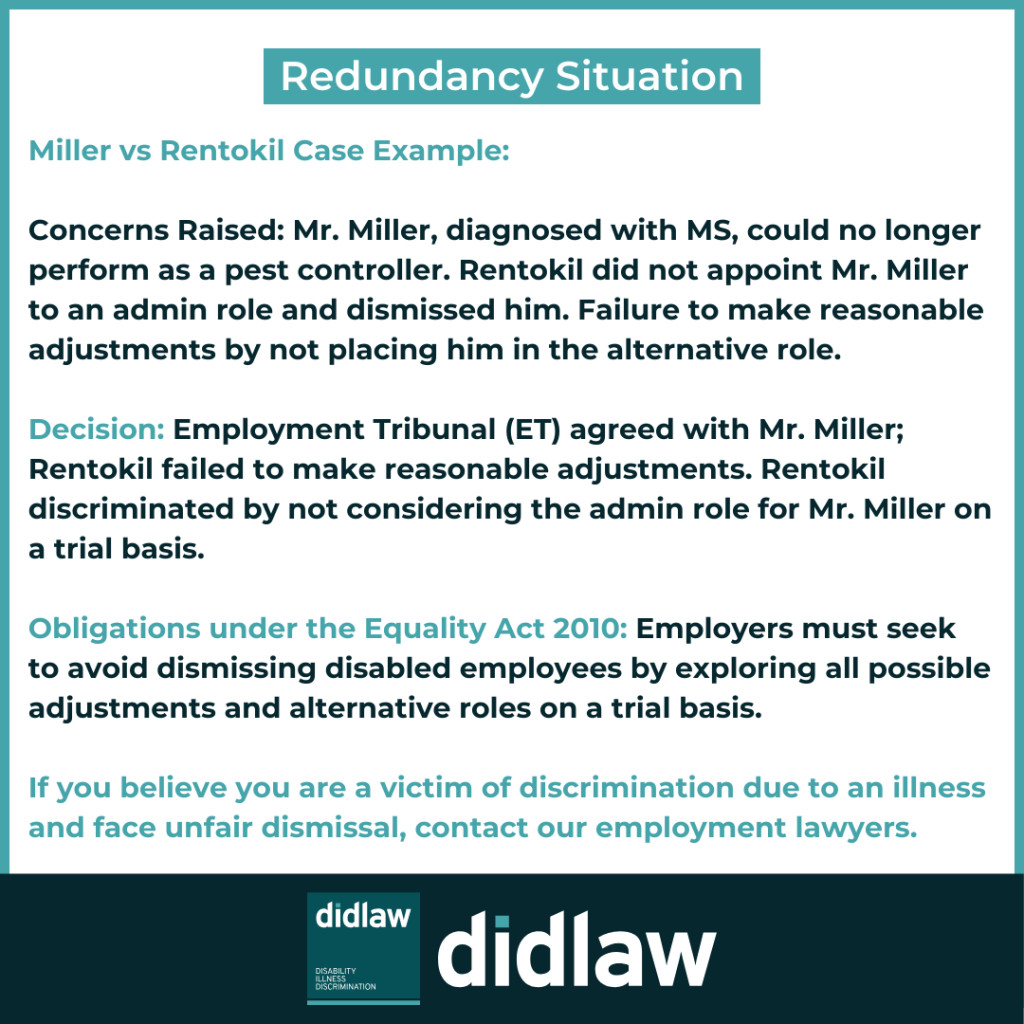
Must my employer place me in an alternative role if I am disabled?
Yes, according to the seminal case of Archibald v Fife which has long been the authority for this.
The Employment Appeal Tribunal (EAT) has said yes again in Miller v Rentokil.
The Claimant suffered from MS and was unable to continue working as a pest controller after diagnosis. This was because he was unable to work from heights which made up about forty percent of his role. His pace of work was also slower due to his MS. MS is one of the “automatic” disabilities in the Equality Act 2010. The others are cancer, HIV and some severe sight impairments. This means that if you have MS you do not have to prove that you are a disabled employee.
Rentokil looked at alternatives to dismissal. Mr Miller applied for an admin role. He did not succeed in being appointed at interview and was dismissed. Mr Miller claimed that the failure to put him in the role on a trial basis was a failure to make reasonable adjustments. The Employment Tribunal agreed. Rentokil appealed the decision.
The EAT agreed with the first tribunal. Mr Miller could no longer carry out his role due to disability and this placed him at a substantial disadvantage. There was an alternative role available in the new structure that could potentially remove the disadvantage. The new role was suitable. It was then incumbent on his employer to show that it was not reasonable to place him in that role or to have tried to place him in it even on a temporary basis.
The first tribunal had correctly decided that the employer was unable to show that it was not reasonable. The ET and the EAT did have to take the employer’s assessment into account but they were not required to agree with it and did not. Effectively they had pre-judged that the new role was not suitable, on a subjective basis, without opening their minds to the possibility that it might be a good alternative to avoid Mr Miller’s dismissal. On this basis they had unlawfully discriminated against him.
I quite routinely run this argument against employers. The reasonable adjustments duty is far-ranging. The entire thrust of the Equality Act 2010 provisions around disability is that where possible the dismissal of a disabled employee should be avoided because the job market is hostile to disabled people.
Rentokil could and should have done more. It surprises me the extent to which many employers are not aware of this obligation in a redundancy scenario. It is not the usual suitable alternative role for any employee that they must look at: it goes beyond this. The relevant question is what can we do to avoid dismissing this employee and is there something they can do in the organisation to preserve employment. This will be fact specific and depend on the size of the organisation but the message is clear: for disabled employees you need to do more.
This blog was written by Karen Jackson, MD, Partner and a specialist in disability discrimination law at didlaw.
